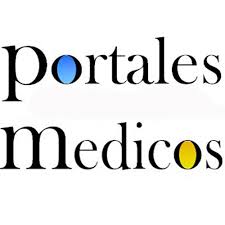Estudio comparativo de los patrones de referencia Fundacredesa y oms en la evaluación nutricional y de crecimiento de escolares y adolescentes, Mérida- Venezuela
Comparative study of the reference standards of Fundacredesa and oms in the nutritional and growth assessment of schoolchildren and adolescents. Mérida, Venezuela
Resumen
RESUMEN
Introducción: para medir el crecimiento se utilizan patrones de referencia, el uso de una referencia internacional o nacional aún está en discrepancia. Objetivo: evaluar la concordancia del diagnóstico de crecimiento y estado nutricional con el patrón de referencia FUNDACREDESA (Nacional) y OMS 2006 (Internacional) en escolares y adolescentes, Mérida Venezuela. Metodología: estudio analítico de corte trasversal. Se estudiaron 922 escolares y adolescentes. Las variables analizadas fueron T/E e IMC/E diferenciada por sexo. Los puntos de corte para el diagnóstico fueron Normal: > p10 < p90; Bajo la Norma (BN): ≤ p10; Sobre la Norma (SN): Sobrepeso: >p90< p97 y Obesidad: ≥ p97. Se estimó el coeficiente kappa para evaluar la concordancia entre las referencias. Resultados: Al comparar el diagnóstico de crecimiento (T/E), BN 9,4% OMS vs 4,0% FUNDACREDESA, Talla normal 83,4% OMS vs 78,6% FUNDACREDESA. Los SN FUNDACREDESA 17,4% vs 7,4% OMS. Concordancia débil (kappa: 0,299) p <0,05. Diagnóstico nutricional (IMC) BN15,8% IMC-OMS vs 9,8% IMC-FUNDACREDESA. Mientras que IMC-FUNDACREDESA normales 72,8%, vs OMS 59,5%. Los SN, IMC-OMS 24,6%; vs IMC-FUNDACREDESA 17,5%; concordancia buena (kappa: 0,710.) p< 0, 05. Conclusiones: el patrón OMS clasifica BN y SN y FUNDACREDESA parece sobreestimar normalidad, con buena concordancia entre el patrón de OMS y FUNDACREDESA para IMC. Se recomienda el patrón nacional, considerando inicio de la pubertad a edades más tempranas en los venezolanos. De allí la importancia de contar con referencias locales y datos actualizados.
ABSTRACT
Introduction: Reference standards are used to measure growth, the use of an international or national reference is still in discrepancy. Objective: To evaluate the concordance of the diagnosis of growth and nutritional status with the FUNDACREDESA (National) and WHO 2006 (International) reference standards in school children and adolescents, Merida, Venezuela. Methodology: Cross-sectional analytical study. A total of 922 schoolchildren and adolescents were studied. The variables analyzed were T/E and BMI/E differentiated by sex. The cut-off points for diagnosis were Normal: > p10 < p90; Below Normal (BN): ≤ p10; Above Normal (SN): Overweight: > p90< p97 and Obesity: ≥ p97. The kappa coefficient was estimated to evaluate the concordance between references. Results: When comparing the diagnosis of growth (T/E), BN 9.4% WHO vs 4.0% FUNDACREDESA, Normal height 83.4% WHO vs 78.6% FUNDACREDESA. SN FUNDACREDESA 17.4% vs. 7.4% WHO. Weak concordance (kappa: 0.299) p <0.05. Nutritional diagnosis (BMI) BN15.8% BMI-WHO vs 9.8% BMI-FUNDACREDESA. While BMI-FUNDACREDESA normal 72.8%, vs WHO 59.5%. The SN, BMI-WHO 24.6%; vs BMI-FUNDACREDESA 17.5%; good concordance (kappa: 0.710.) p<0.05. Conclusions: The WHO pattern classifies BN and SN and FUNDACREDESA seems to overestimate normality, with good concordance between the WHO and FUNDACREDESA pattern for BMI. The national pattern is recommended, considering the onset of puberty at earlier ages in Venezuelans. Hence the importance of having local references and updated data.
Recibido: 27-07-2025
Aceptado: 20-09-2025
Publicado: 17-11-2025
Palabras clave
Texto completo:
PDFReferencias
Al-Hazzaa, H. M., Alrasheedi, A. A., Alsulaimani, R. A., Jabri, L., Alhowikan, A. M., Alhussain, M. H., Bawaked, R. & Alqahtani, S. (2022). Prevalence of overweight and obesity among saudi children: A comparison of two widely used international standards and the national growth references. Frontiers in Endocrinology, 13, 954755. https://doi.org/10.3389/fendo.2022.954755
Atalah, E., Loaiza, S., & Taibo, M. (2012). Estado nutricional en escolares chilenos según la referencia NCHS y OMS 2007. Nutrición Hospitalaria, 27(1), 1-6.
Baya Botti, A., Pérez-Cueto, F. J. A., Vásquez, P. A., & Kolsteren, P. W. (2010). International BMI-for-age references underestimate thinness and overestimate overweigth and obesity in Bolivian adolescents. Nutrición Hospitalaria, 25(3), 428-436.
Bergel, M., Cesani, M., Cordero, M., Navazo, B., Olmedo, S., Quintero, F., Sardi, M., Torres, M., Aréchiga, J., Méndez de Pérez, B., y Marrodán, M. (2014). Valoración nutricional de escolares de tres países iberoamericanos: Análisis comparativo de las referencias propuestas por el International Obesity Task Force (IOTF) y la Organización Mundial de la Salud. Nutrición Clínica y Dietética Hospitalaria, 34(1), 8-15. https://doi.org/10.12873/341bergel
Bundak, R., Yavaş Abalı, Z., Furman, A., Darendeliler, F., Gökçay, G., Baş, F., Günöz, H., & Neyzi, O. (2022). Comparison of National Growth Standards for Turkish Infants and Children with World Health Organization Growth Standards. Journal of Clinical Research in Pediatric Endocrinology, 14(2), 207-215. https://doi.org/10.4274/jcrpe.galenos.2022.2021-9-10
Carrillo-López, P., Guillamón, R., García-Canto, E., & Pérez-Soto, J. J. (2019). Discrepancia en el diagnóstico del estado nutricional de escolares utilizando criterios nacionales e internacionales. Nutrición Clínica y Dietética Hospitalaria, 39(3), 30-36. https://doi.org/10.12873/393carrillo
Chandrashekarappas, S., Mysuru, N., & Manjunath, R. (2018). Nutritional status in adolescent girls: Attempt to determine its prevalence and its association with sociodemographic variables. Family Medicine and Community Health, 6(4), 184–190. https://doi.org/10.15212/FMCH.2017.0122
De Onis, M., Onyango, A. W., Borghi, E., Siyam, A., Nishida, C., & Siekmann, J. (2007). Development of a WHO growth reference for school-aged children and adolescents. Bulletin of the World Health Organization, 85(9), 660–667. https://doi.org/10.2471/blt.07.043497
Garraza, M., Gauna, M. E., Torres, M. F., Navazo, B., Quintero, F., Bergel, M., y Cesani, M. (2023). Percentiles de peso, talla e índice de masa corporal de escolares de Mendoza. Comparación con la referencia de la Organización Mundial de la Salud. Archivos Argentinos de Pediatría, 121(2). https://doi.org/10.5546/aap.2022-02672
Ghanbari, S., & Ayatollahi, S. M. (2016). Comparing the role of standard references on the prevalence of Iranian children and adolescents’ overweight and obesity: A systematic review and meta-analysis. Journal of Research in Medical Sciences, 21, 121. https://doi.org/10.4103/1735-1995.193512
Granado, D., Sosa, L., Funes, P., Rivas, L., Echagüe, G., & Acosta, M. (2017). Concordancia entre tablas de referencia utilizadas para diagnóstico del estado nutricional de escolares de comunidades rurales. Pediatría (Asunción), 44(3), 218-225. https://doi.org/10.18004/ped.2017
Hamill, P. V. V., Drizd, T. A., Johnson, C. L., Reed, R. B., & Roche, A. F. (1977). NCHS growth curves for children from birth to 18 years: United States (Vital and Health Statistics Series 11, No. 165). U.S. Department of Health, Education, and Welfare.
Hughes, I. P., Harris, M., Cotterill, A., Garnett, S. P., Bannink, E., Pennell, C. E., Sly, P., Leong, G., Cowell, C., Ambler, G., Werther, G., Hofman, P., Cutfield, W. & Choong, C. (2014). Comparison of Centers for Disease Control and Prevention and World Health Organization references/ standards for height in contemporary Australian children: Analyses of the Raine Study and Australian National Children’s Nutrition and Physical Activity cohorts. Journal of Paediatrics and Child Health, 50(11), 895-901. https://doi.org/10.1111/jpc.12672
Izaguirre-Espinoza, I., & López-Blanco, M. (2013a). Comparación de los resultados de talla con valores de referencia nacionales e internacionales. En M. López, I. Izaguirre, & C. Macías (Eds.), Crecimiento y desarrollo: Bases para el diagnóstico y seguimiento clínico (pp. 113-119). Editorial Médica Panamericana.
Izaguirre-Espinoza, I., & López-Blanco, M. (2013b). Comparación de los resultados de peso con valores de referencia nacionales e internacionales. En M. López, I. Izaguirre, & C. Macías (Eds.), Crecimiento y desarrollo: Bases para el diagnóstico y seguimiento clínico (pp. 143-150). Editorial Médica Panamericana.
Karim, A., & Qaisar, R. (2020). Anthropometric measurements of school-going-girls of the Punjab, Pakistan. BMC Pediatrics, 20(1), 223. https://doi.org/10.1186/s12887-020-02135-4
Karki, S., Päkkilä, J., Laitala, M. L., Ojaniemi, M., & Anttonen, V. (2018). National reference centiles of anthropometric indices and BMI cut-off values in a child population in Nepal. Annals of Human Biology, 45(5), 447-452. https://doi.org/10.1080/03014460.2018.1530302
Lomaglio, D., Marrodán, M., Dipierri, J., Alfaro, E., Bejarano, I., Cesani, M., Dahinten, S., Garraza, M., Menecier, N., Navazo, B., Quintero, F., Román, E., Torres, M. y Zonta, M. (2022). Referencias de índice de masa corporal. Precisión diagnóstica con área grasa braquial en escolares argentinos. Archivos Latinoamericanos de Nutrición, 72(1), 31-42. https://doi.org/10.37527/2022.72.1.004
López, M. (2018). Variabilidad del crecimiento y la maduración física en Venezuela. Visión y análisis de una revisión documental 1939-2016. En A. Díaz Bruzual & E. López-Loyo (Eds.), Colección Razetti (Vol. XXI, pp. 1-73).
López-Blanco, M., Izaguirre-Espinoza, I., & Macías-Tomei, C. (2013). Diseño del Estudio Longitudinal. En M. López, I. Izaguirre, & C. Macías (Eds.), Crecimiento y desarrollo: Bases para el diagnóstico y seguimiento clínico (pp. 23-34). Editorial Médica Panamericana.
López-Blanco, M., Izaguirre-Espinoza, I., Macías-Tomei, C., & Saab-Verardy, L. (1995a). Growth in stature in early, average, and late maturing children of the Caracas mixed-longitudinal study. American Journal of Human Biology, 7(4), 517-527. https://doi.org/10.1002/ajhb.1310070413
López-Blanco, M., Izaguirre-Espinoza, I., Macías-Tomei, C., Saab-Verardy, L., & Vega-Albarrán, C. (2006). Gráficos para uso clínico: distancia y velocidad de talla y peso y estadios de maduración sexual. FUNDACREDESA – CESMA Universidad Simón Bolívar.
López-Blanco, M., Izaguirre-Espinoza, I., Macías-Tomei, C., y Saab-Verardy, L. (1995b). Resultados y Discusión de Aspectos físicos del crecimiento y la Maduración. En: Estudio Longitudinal del Área Metropolitana de Caracas. Informe final (Proyecto s1-541 CONICIT) (Vol. II, pp. 1-153). [Informe Técnico].
López-Blanco, M., Landaeta-Jiménez, M., Izaguirre-Espinoza, I., & Macias-Tomei, C. (1996a). Crecimiento Físico y Maduración. En H. Méndez Castellano (Ed.), Estudio Nacional de Crecimiento y Desarrollo Humanos de la República de Venezuela (Tomo II, pp. 407-846). Escuela Técnica Popular Don Bosco.
López-Blanco, M., Macías-Tomei, C., Landaeta-Jiménez, M., Izaguirre-Espinoza, I., & Méndez-Pérez, B. (2021). Referencias internacional y nacional, su uso en el estudio del crecimiento y la maduración física. Anales Venezolanos de Nutrición, 34(1), 37-48.
López-Blanco, M., Macías-Tomei, C., Mariño-Elizondo, M., & Rojas-Loyola, G. (2018). Evaluación del crecimiento, la maduración y el estado nutricional en atención primaria y secundaria. Archivos Venezolanos de Puericultura y Pediatría, 81, 56-64.
López-Blanco, M., Macías-Tomei, C., Martín-Rojo, J., & Guerrero-Maldonado, T. (2020). Una aproximación al diagnóstico clínico integral utilizando indicadores antropométricos. Estudio piloto venezolano. Gaceta Médica de Caracas, 128(2), 217-229.
Macías-Tomei, C., Izaguirre-Espinoza, I., & López-Blanco, M. (2000). Maduración sexual y ósea según ritmo en niños y jóvenes del Estudio Longitudinal de Caracas. Anales Venezolanos de Nutrición, 13, 188-195.
Macías-Tomei, C., López-Blanco, M., Vásquez, M., Méndez-Pérez, B., & Ramírez, G. (2012). Capacidad del índice de masa corporal por tres referencias, para predecir el diagnóstico integral en prepúberes y púberes venezolanos. Archivos Venezolanos de Puericultura y Pediatría, 75(2), 38-44. http://ve.scielo.org/scielo.php?script=sci_arttext&pid=S0004-06492012000200003&lng=es
Macias-Tomei, C., López-Blanco, M., Espinoza, I., & Vásquez-Ramirez, M. (2000). Pubertal development in Caracas upper-middle-class boys and girls in a longitudinal context. American Journal of Human Biology, 12(1), 88-96. https://doi.org/10.1002/(SICI)1520-6300(200001/02)12:1<88:AID-AJHB10>3.0.CO;2-H
Mata-Meneses, E., Moya-Sifontes, M., Córdova, M., & Bauce, G. (2010). Antropometría nutricional en escolares venezolanos. Revista Argentina de Antropología Biológica, 9(2), 29–50.
Méndez Castellano, H. (Ed.). (1996). Estudio Nacional de Crecimiento y Desarrollo Humanos de la República de Venezuela. Proyecto Venezuela. Escuela Técnica Popular Don Bosco.
Méndez Castellano, H., López-Blanco, M., Landaeta-Jiménez, M., & González-Tineo, A., Pereira, I. (1986). Estudio Transversal de Caracas. Archivos Venezolanos de Puericultura y Pediatría, 49, 111-155.
Mera Flores, R., & Toledo-Santana, N. (2022). Estudio comparativo entre curvas de crecimiento para ecuatorianos y de la OMS en niños manabitas de 7 a 10 años. Anatomía Digital, 5(3), 91-103. https://doi.org/10.33262/anatomiadigital.v5i3.2192
Meyer, E., Carrillo, R., Román, E. M., Bejarano, I., Alfaro, E. L., & Dipierri, J. E. (2013). Prevalencia de sobrepeso y obesidad en escolares jujeños de diferente nivel altitudinal según las referencias IOTF, CDC y OMS. Archivos Argentinos de Pediatría, 111(6), 516-522. https://doi.org/10.5546/aap.2013.eng.516
Milani, S., Buckler, J. M., Kelnar, C. J., Benso, L., Gilli, G., Nicoletti, I., Faglia, G., Radetti, G., Bona, G., Schonbek, Y., Buuren, S., Hermanussen, M., Grugni, G., Marazzi, N., Júlíusson, P., Roelants, M., Hoppenbrouwers, K., Hauspie, R., Bjerknes, R., Lejarraga, H. & Sartorio, A. (2012). The use of local reference growth charts for clinical use or universal standard: A balanced appraisal. Journal of Endocrinological Investigation, 35(2), 224-226. https://doi.org/10.1007/BF03345422
Martinez-Hernández, R., & Fuentes-Cuevas, M. C. (2013). Contraste entre los patrones de crecimiento NCHS y los nuevos patrones OMS, para la población mexicana menor de 5 años en un Centro de Salud. Diferencias en las estimaciones. Revista de Medicina Investigativa, 1(1), 74-79.
Oliveira, M. H., Pereira, D. da S., Melo, D. da S., Silva, J. C., & Conde, W. L. (2022). Accuracy of international growth charts to assess nutritional status in children and adolescents: a systematic review. Revista Paulista de Pediatria, 40, e2021016. https://doi.org/10.1590/1984-0462/2022/40/2021016
Partap, U., Young, E. H., Allotey, P., Sandhu, M. S., & Reidpath, D. D. (2017). The use of different international references to assess child anthropometric status in a malaysian population. The Journal of Pediatrics, 190, 63-68.e1. https://doi.org/10.1016/j.jpeds.2017.07.049
Pelegrini, A., Santos, D. da C. C., Araujo, A. J. G. de, & Petroski, E. L. (2013). Comparison of three criteria for overweight and obesity classification in brazilian adolescents. Nutrition Journal, 12, 5. https://doi.org/10.1186/1475-2891-12-5
Pérez, B. M., Landaeta-Jiménez, M., Amador, J., & Vásquez, M. (2009). Sensibilidad y especificidad de indicadores antropométricos de adiposidad y distribución de grasa en niños y adolescentes venezolanos. Interciencia, 34(2), 84-90.
Ramírez, E., Grijalva-Haro, M. I., & Valencia, M. E. (2006). Prevalencia de sobrepeso y obesidad en el noroeste de México por tres referencias del índice de masa corporal: diferencias en la clasificación. Archivos Latinoamericanos de Nutrición, 56(3), 251-256.
Regecová, V., Hamade, J., Janechová, H., & Ševčíková, Ľ. (2018). Comparison of Slovak reference values for anthropometric parameters in children and adolescents with international growth standards: implications for the assessment of overweight and obesity. Croatian Medical Journal, 59(6), 313–326. https://doi.org/10.3325/cmj.2018.59.313
Tarupi, W., Lepage, Y., Felix, M. L., Monnier, C., Hauspie, R., Roelants, M., Hidalgo, R., & Vercauteren, M. (2020). Growth references for weight, height, and body mass index for Ecuadorian children and adolescents aged 5-19 years. Archivos Argentinos de Pediatría, 118(2), 117-124. https://doi.org/10.5546/aap.2020.eng.117
Weiner, J. S., & Lourie, J. A. (1969). Human biology: A guide to field methods. Blackwell Scientific Publications.
Wilde, J. A., van Dommelen, P., van Buuren, S., & Middelkoop, B. J. (2015). Height of South Asian children in the Netherlands aged 0-20 years: secular trends and comparisons with current Asian Indian, Dutch and WHO references. Annals of Human Biology, 42(1), 38-44. https://doi.org/10.3109/03014460.2014.926988
World Health Organization. (2006). WHO child growth standards: length/height-for-age, weight-for-age, weight-for-length, weight-for-height and body mass index-for-age: methods and development. https://www.who.int/publications/i/item/924154693X
World Health Organization. (2007). Growth reference data for 5-19 years. https://www.who.int/tools/growth-reference-data-for-5to19-years
World Health Organization. (2009). WHO Anthro for personal computers, version 3.2.2, 2011: Software for assessing growth and development of the world's children. https://www.who.int/tools/child-growth-standards/software
Xin-Nan, Z., & Hui, L. (2013). Construction of a new growth references for China based on urban Chinese children: comparison with the WHO growth standards. PLoS ONE, 8(3), e59569. https://doi.org/10.1371/journal.pone.0059569
Enlaces refback
- No hay ningún enlace refback.
Depósito Legal Electrónico: ME2016000090
ISSN Electrónico: 2610-797X
DOI: https://doi.org/10.53766/GICOS
| Se encuentra actualmente registrada y aceptada en las siguientes base de datos, directorios e índices: | |||
 | |||
 |  |  |  |
 |  | ||
 |  |  |  |
 |  |  |  |
 |  |  |  |
 |  |  |  |
![]()
Todos los documentos publicados en esta revista se distribuyen bajo una
Licencia Creative Commons Atribución -No Comercial- Compartir Igual 4.0 Internacional.
Por lo que el envío, procesamiento y publicación de artículos en la revista es totalmente gratuito.

